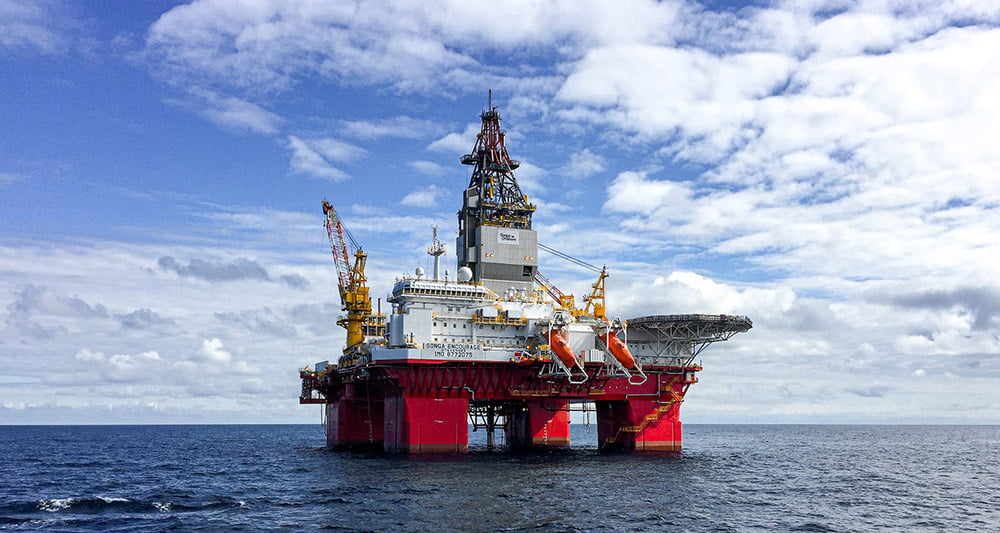10 Most Polluted Cities in the World

There are many cities around the world that are known for being among the most polluted cities. These cities have consistently ranked highly in terms of air pollution, and their residents often suffer from a range of health problems as a result. Factors contributing to high levels of pollution in these cities include the heavy reliance on fossil fuels for transportation and energy, industrial activities, and poor waste management practices.
Major factors increasing pollution in Most Polluted Cities
There are a number of factors that contribute to the high levels of pollution found in the most polluted cities. The burning of fossil fuels releases harmful greenhouse gases into the atmosphere, which contribute to climate change and air pollution. Industrial activities such as manufacturing and power generation also contribute to pollution in these cities. Poor waste management practices, such as allowing trash and other waste to accumulate in streets and waterways, can also contribute to the high levels of pollution found in the most polluted cities. These factors can have serious consequences for the environment and the health of city residents.
- Lahore, Pakistan
- Dhaka, Bangladesh
- Delhi, India
- Accra, Ghana
- Wuhan, China
- Hangzhou, China
- Kolkata, India
- Ulaanbaatar, Mongolia
- Shanghai, China
- Karachi, Pakistan
10 Karachi, Pakistan

Air Pollution Level: Moderate
Air Quality Index: 86
Pollutant: PM2.5 (47µg/m³)
It is well known that the air pollution condition in Karachi, Pakistan is extremely poor. The city experiences high levels of both particulate matter and greenhouse gases, which are harmful to human health. The main sources of air pollution in Karachi include vehicle emissions, industrial activities, and the burning of fossil fuels. The air pollution in Karachi has been linked to a range of health issues, including respiratory problems, cardiovascular disease, and cancer. It is important for the government and local authorities to address this issue and implement measures to reduce air pollution in the city.
9 Shanghai, China

Air Pollution Level: Moderate
Air Quality Index: 90
Pollutant: PM2.5 (72µg/m³)
The presence of fewer trees and an increase in industrial waste, both contribute to air pollution in Shanghai. Trees and other plants help to improve air quality by absorbing carbon dioxide and other pollutants from the air and releasing oxygen. As Shanghai has fewer trees and other vegetation presents, the ability of the natural environment to clean the air is reduced. Industrial waste also contributes to air pollution in several ways. The production, transportation, and disposal of industrial waste, all release pollutants into the air, including particulate matter, gases, and chemicals.
8 Ulaanbaatar, Mongolia

Air Pollution Level: Unhealthy
Air Quality Index: 163
Pollutant: PM2.5 (72µg/m³)
Ulaanbaatar, the capital and largest city of Mongolia, has faced significant air pollution challenges in recent years due to the burning of coal and other fossil fuels for heating and energy production. The city’s location in a valley surrounded by mountains also contributes to poor air quality, as pollutants can become trapped in the valley. To reduce air pollution and improve air quality for the health and well-being of the city’s residents, the local government must take necessary steps. This could include implementing stricter regulations on industrial emissions, promoting the use of cleaner technologies, and improving waste management practices to reduce the release of pollutants into the air.
7 Kolkata, India

Air Pollution Level: Unhealthy
Air Quality Index: 163
Pollutant: PM2.5 (79.2µg/m³), PM10 (107µg/m³)
Kolkata, the capital of the Indian state of West Bengal, is known to have high levels of air pollution. According to data from the World Health Organization (WHO), Kolkata is ranked as one of the most polluted cities in the world based on PM2.5 levels. PM2.5 is a type of air pollutant that refers to fine particles that are less than 2.5 micrometers in diameter and can be inhaled into the lungs, causing health problems. Other sources of air pollution in Kolkata include the use of solid fuels for cooking and heating, which releases pollutants such as particulate matter and carbon monoxide into the air. In addition, the city’s busy port and heavy traffic can also contribute to air pollution through the release of gases and particulates.
6 Hangzhou, China

Air Pollution Level: Unhealthy
Air Quality Index: 165
Pollutant: PM2.5 (82.5µg/m³), PM10 (93µg/m³)
One significant source of air pollution in Hangzhou is the burning of fossil fuels, such as coal, for energy. The use of fossil fuels releases a range of air pollutants, including carbon dioxide, sulfur dioxide, nitrogen oxides, and particulate matter, into the air. In addition to energy production, transportation is also a significant source of air pollution in Hangzhou. The city’s growing population and economic development have led to an increase in the number of vehicles on the road, which contributes to air pollution through the emission of gases and particulates. Other sources of air pollution in Hangzhou include industrial activities, such as manufacturing and construction, as well as waste incineration and the use of solid fuels for cooking and heating.
5 Wuhan, China

Air Pollution Level: Very Unhealthy
Air Quality Index: 190
Pollutant: PM2.5 (132µg/m³), PM10 (89µg/m³)
Wuhan, a city located in central China, has a high population density and a rapid rate of industrialization, which has led to an increase in air pollution from factories and vehicles. The city’s rapid rate of urbanization and population growth has also contributed to the increase in air pollution. Additionally, the city’s location in the Yangtze River Delta region, which is a major industrial and agricultural region, adds to air pollution. All of these factors contribute to Wuhan’s poor air quality and make it one of the most polluted cities in the world.
4 Accra, Ghana

Air Pollution Level: Very Unhealthy
Air Quality Index: 193
Pollutant: PM2.5 (75µg/m³)
The worst air pollution condition in Accra, Ghana can occur during the dry season when there is little wind and rain to disperse pollutants in the air. At these times, the air can become heavily polluted with particulate matter, gases, and other pollutants, leading to poor air quality. This can be dangerous for both the environment and humans. Air pollution can harm the environment by damaging crops, forests, and bodies of water. It can also harm wildlife and contribute to climate change. It is important for the government and the public to take steps to reduce air pollution in Accra and other cities in order to protect both the environment and human health.
3 Delhi, India

Air Pollution Level: Very Unhealthy
Air Quality Index: 217
Pollutant: PM2.5 (117µg/m³), PM10 (182.5µg/m³)
Delhi, the capital city of India, has a serious air pollution problem. The city frequently experiences high levels of particulate matter and toxic gases in the air, which can have serious health consequences for its residents. The main sources of air pollution in Delhi include vehicle emissions, construction activity, and the burning of fossil fuels for energy and household purposes. In recent years, the city has implemented measures to try and reduce air pollution, such as banning certain types of vehicles and promoting the use of public transportation. But much more needs to be done to address this pressing issue. The air quality in Delhi can vary significantly depending on the time of year and weather conditions, with levels often reaching hazardous levels during the winter months.
2 Dhaka, Bangladesh

Air Pollution Level: Very Unhealthy
Air Quality Index: 236
Pollutant: PM2.5 (185.8µg/m³)
The city has a high population density and a rapid rate of industrialization, which has led to an increase in air pollution from factories and vehicles. Additionally, the city lacks a proper waste management system, which contributes to poor air quality. The use of low-quality fuels and the burning of trash also contribute to pollution in the city. The city’s geography, with its low-lying elevation and lack of wind, also traps pollution and contributes to the high levels of air pollution. All of these factors contribute to Dhaka’s poor air quality and make it one of the most polluted cities in the world.
1 Lahore, Pakistan

Air Pollution Level: Very Unhealthy
Air Quality Index: 246
Pollutant: PM2.5 (196µg/m³)
Lahore tops the list of 10 most polluted cities in the world due to a number of factors. One of the main reasons for the high level of air pollution in Lahore is the heavy traffic congestion in the city. This results in the emission of large amounts of harmful pollutants such as carbon monoxide and nitrogen oxide. Additionally, Lahore has a large number of industrial areas that contribute to air pollution through the emission of smoke and other chemical substances. The city also has a high level of dust and particulate matter in the air because of construction activities, agricultural practices, and other sources. Finally, Lahore has a dry and hot climate, which can exacerbate the effects of air pollution by trapping pollutants close to the ground.
Source: IQAir (as of 29/06/2022)












It’s frustrating to see that some governments aren’t doing more to combat pollution.
It’s alarming to see how high some of these cities rank on the list.
I completely agree that Delhi is mentioned in this list. We suffer a lot here in Delhi because of pollution and the government is doing nothing 🙁
I completely understand your frustration. Pollution can have serious health consequences and it’s important that governments take action to address it. It’s great to see that people are raising awareness about these issues. Hopefully, with enough attention and pressure, something can be done to improve the situation in Delhi.
It’s frustrating to see that some governments aren’t doing more to combat pollution.